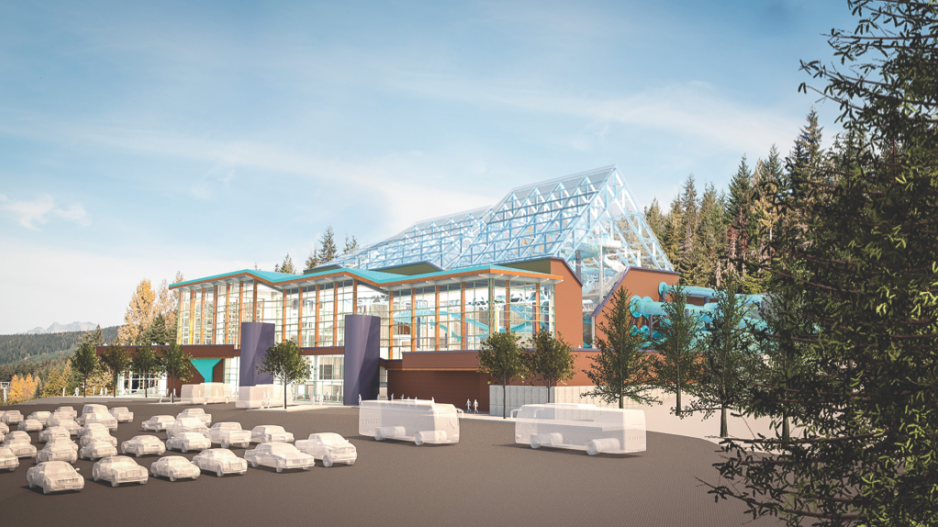Half a century after Whistler Mountain first opened, Whistler Blackcomb is undergoing a massive transformation.
The resort was recently bought by Colorado-based Vail Resorts Inc., one of the world’s largest operators of ski destinations. Whistler Blackcomb is also embarking on a $345 million “renaissance” plan to turn Whistler Blackcomb into a year-round, weather-independent destination for tourism and sport – an unprecedented investment proposal that, despite the resort’s status as the largest and most visited destination of its kind in North America, Whistler Blackcomb needs.
Up against climate change and what the competition has to offer, Ski magazine’s best resort three years running is readying itself for a future beyond fresh powder.
That includes a wide range of snowless competitive and recreational sports, such as biking and hiking, and plans for a huge waterpark.
“What people don’t realize is … the ongoing events that we have throughout the year that continually bring people here,” said Dave Brownlie, president and CEO of Whistler Blackcomb.
Such events include the World Ski & Snowboard Festival – which extends Whistler’s winter season to April – Canada Cup Series events in ski and snowboard slope style and Crankworx, which has brought some of the greatest mountain bike athletes to Whistler Blackcomb for more than a decade.
Danny Tuff was in the process of interviewing for his current role as CEO of the Whistler Chamber of Commerce at the end of this year’s 10-day Crankworx event in August.
“The amount of people and the amount of business activity that was transpiring was off the charts,” Tuff said.
According to the Western Canada Bike Tourism Association, Crankworx attracted 55,000 unique visitors in 2006 – with 23,000 travelling solely to attend the festival. It generated $11.5 million in revenue, and that was 10 years ago. While many of the numbers around Crankworx’s economic impact remain private, Tourism Whistler has seen the number of room nights during the festival rise 39% from 2007 to 2015.
The single largest new development in the resort’s bike park is a key component of Whistler Blackcomb’s renaissance plan. Along with a multi-year trail expansion that could double the existing bike park’s size, the plan proposes a 30,000 square-foot action sports complex, the Watershed Indoor Adventure Centre – with a range of features from slides to surfing – and the Blackcomb Adventure park.
“Most resort destinations will have what I refer to as sort of a single bell curve,” said Barrett Fisher, president and CEO of Tourism Whistler. “You have a high season that is either typically in a summer season or a winter season. But Whistler is unique in that we have two bell curves for summer and winter, and in fact we’re seeing more and more those shoulder seasons – primarily on weekends in the spring and fall – filling in.”
As the year-round, weather-independent facilities proposed by the renaissance plan move forward, existing infrastructure in the municipality – legacies from co-hosting the Winter Games – continue to bring revenue to Whistler in new ways.
Whistler Olympic Park, the Sliding Centre and the Athletes’ Centre, all managed by Whistler Sport Legacies, play host to global athletes, competitions and championships throughout the calendar year, enabling Whistler to lead the region as well as the province when it comes to sports.
“[The resort is] not only just facilitating high performance, but also taking a lead in developing sports, developing the culture of some of the sports that really were new to this region as of the Olympic Games,” said Roger Soane, president and CEO of Whistler Sport Legacies.
Fisher said visitor numbers in July and August “are now matching our high-season winter months.” She points to Tough Mudder, a series of hard-core obstacle races, whose audience has grown by 66% between 2011 and 2016. The 2016 RBC GranFondo Whistler cycling event in September had 44% more visits than it did in 2009, and since 2013, Ironman Canada has led to a 24% rise in room nights over the course of the Whistler event.
And with a growing reputation comes a growing economic impact that extends far beyond Whistler. According to the city, the municipality generates $1.5 billion in gross domestic product annually. It’s also responsible for a quarter of B.C.’s annual tourism export revenue, and about $1.37 million in tax revenue to three levels of government, every day.•




